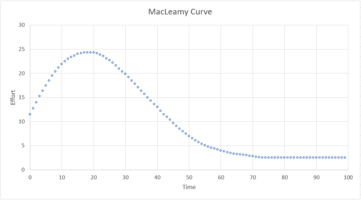I'd like to find an equation that best fits this curve... Seems simple enough right? Y axis = effort in hours/day, X axis is time in days. Note that the effort peaks early and then decays to a lower limit. The area under the curve should be the total effort in hours for the project.
This seams so simple - but I'm crying uncle and need some thoughts to further this exercise.

Thank you - Andy
This seams so simple - but I'm crying uncle and need some thoughts to further this exercise.

Thank you - Andy
